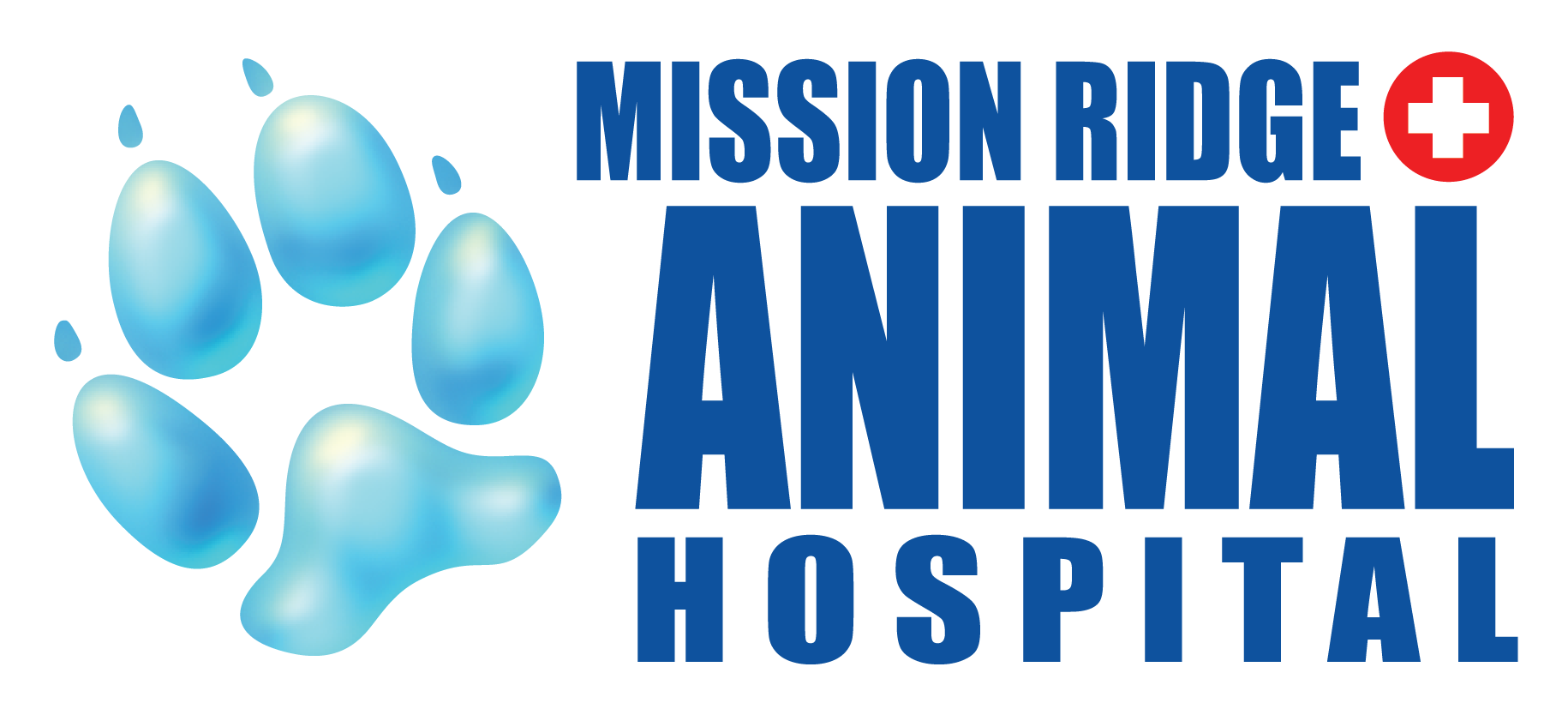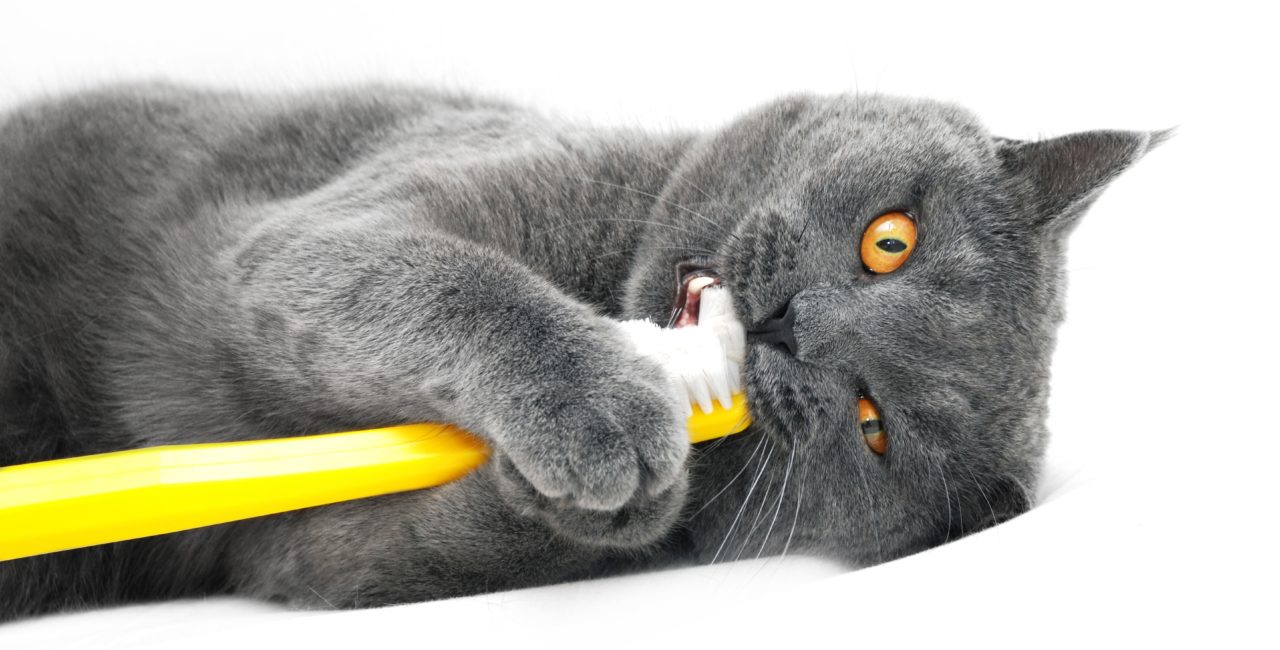Brushing my cat’s teeth? Are you kidding? Do you KNOW my cat? Do you wish me harm? Will you cover my medical expenses?
This often goes through clients’ minds when we tell them the importance of brushing their cat’s teeth (or their dog’s for that matter). The eye roll, the wide eyes of surprise, the blank stare, the snort of “ya right”, the polite nod while thinking “not on your life”. We’ve seen all the reactions!
Dental health in our pets are very important. According to The American Veterinary Dental Society, over 70% of cats show signs of oral disease by the time they’re 3 years old. Poor oral health can lead to the buildup of harmful bacteria, causing tooth decay, painful sores and other issues. As the disease progresses, the gum recedes and bacteria gets into the bloodstream and throughout the body which can increase the risk of health problems such as kidney or heart disease.
Let’s start with prevention! Oral disease develops in stages.
Stage 1: A soft, sticky, often yellow film called plaque forms on the teeth. It consists of food debris, bacteria and saliva.
* This is the stage where brushing is most effective and important!
Stage 2: A hard material called tartar begins to form if plaque is not removed. It can irritate the gums and further encourage the growth of plaque.
Stage 3: This then leads to gingivitis, causing painful inflammation along the gum line.
Stage 4: Gingivitis will eventually lead to periodontal disease, which can cause pain, tooth loss and severe infection. Gums start to recede and bacteria travels into the bloodstream and throughout the body.
So let’s get brushing! Mechanical action (brushing) is the most effective way to remove plaque from the mouth.
Here’s a few tips to increase your success:
1. Get your cat used to having his/her mouth handled. Gently handle the muzzle for a few seconds on a regular basis. Scratch the chin, lift a lip, gently hold your hand on top of their head and grasp the jaw with your fingers. This works best in “quiet times” for your pet. Always end on a good note, don’t push patience!
2. Introduce some tasty toothpaste. It must be an animal toothpaste, flouride free. Put a small amount on your finger and let them lick it off, or wipe it under their lip. You can also start rubbing your finger on the canine teeth (fangs), eventually working your way farther back the more they get used to it.
* Some people find toothpaste to be too messy than it’s worth. It’s not a necessary tool, but can aid in your pet’s compliance and some also have enzymatic properties to help break down plaque.
3. Introduce the toothbrush! A small soft bristled brush will work. Some people enjoy the finger brushes, as long as the bristles are nice and soft. Wet the bristles and place some toothpaste on the brush, pushing the paste firmly into the bristles for less mess. Hold the brush like a pen and gently scrub the canine teeth first, ideally in a downward fashion. Make it quick the first time and reward good behavior! Eventually you can work your way to the back teeth. Gradually increase the amount of time and pressure applied to the teeth in each session. You can steady their head by holding it the same way as practiced in step 1. Read your cat! If you hit a step that they aren’t tolerating, go back to the step where they were okay, and try from there again.
* If the cat doesn’t tolerate the toothbrush right away, a Q-tip with some toothpaste (or even tuna juice!) or a moist cloth over your finger works great! It doesn’t get all the nooks and crannies or under the gumline like a brush, but at least it’s something and you can work up to the toothbrush.
* Work from behind your cat. The procedure will be less offensive when they don’t have to see you coming.
Ideally a cat (or dog) should have his/her teeth brushed daily, which is something to work up to. Make it a routine! It will help you remember!
In the event that your cat turns into “The Demon Cat” no matter how gradually you try to introduce things, there are some alternatives, though not as effective:
- Dental Diets: Hills t/d, Royal Canin Dental or Purina Veterinary Diet DH are all formulated to help in your oral health regime. They help to scrape off plaque and tartar as they chew and decrease further build up. This is especially handy for the back chewing teeth that are hard to reach with a brush!
- Dental chews: Virbac has a CET Chew for cats that helps to scrub those back teeth, and they’re very tasty!
- Water additives: Healthymouth is the only water additive with a VOHC Seal of approval that is proven to prevent the buildup of plaque.
Professional dental cleanings are an important part of keeping your cat healthy! Ideally cats should get a dental cleaning and oral exam done every 1-2 years. While a cat is under anesthetic they will get a full oral exam. Radiographs will be taken to ensure healthy tooth roots, and your cat will leave with a squeaky clean mouth!
Until the end of March (2015) Mission Ridge Animal Hospital has some great offers for our St.Albert community. Give our veterinary team a call or e-mail us to find out about our dental events.



